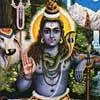Maha Shivaratri Festival 2023 🙏
In 2023 Maha Shivaratri Festival will be celebrated on Saturday 18, February 2023 .
Maha Shivaratri Dates 2023 --2026
Legends of Mahashivratri
There was once a poor hunter from Varanasi. His name was Suswara. He lived with his wife and child in a small hut. Theirs was a hand-to-mouth existence. Suswara would go to the forest and hunt whatever game came his way, and thus feed his family. One particular day, he caught many small animals and birds, which he put into a sack. Encouraged by the catch, he wandered deeper into the forest in search of more game. Soon darkness set in and he turned to go home. He was a little worried as the forest was infested with dangerous animals. He did not like the idea of spending the night there. Soon it became very dark. Unable to find his way back, Suswara climbed a tree to be safe from the wild animals.
Attracted by his scent, animals came lurking under the tree. Hoping to scare them away, Suswara plucked some twigs from the tree and threw them at the animals, but to no avail. Throughout the night the animals kept prowling beneath the tree.
* The hunter was born in Varanasi. Vara refers to the forehead while nasi is the nose. The point where both meet is Varanasi, in other words, the point midway between the eyebrows. This point is also called the ajna chakra and is regarded as a nexus of the three nadis: ida, pingala and sushumna. A spiritual aspirant who concentrates his or her mind on this point gains concentration and gradual control over his senses. The killing of the animals thus indicates control over one's vasanas.
* The bilva tree corresponds to the spinal column. The tree's leaves are special: each stalk has three leaflets. The three leaflets represent the three nadis mentioned above. The climbing of the tree represents the ascent of the kundalini shakti from the muladhara to the ajna chakra.
* Keeping awake is symbolic of the kind of awareness and oneness of purpose that a spiritual aspirant needs to reach the goal. He cannot afford to be slack even for a moment.
Namami Shamishan Nirvan Roopam
Vibhum Vyapakam Brahma Veda Swaroopam
Nijam Nirgunam Nirvikalpam Nireeham
Chidakasamaakasa Vasam Bhajeham
Niraakara Monkaara Moolam Thureeyam
Giraa Jnana Gotheethamesam Gireesam
Karalam Maha Kala Kalam Krupalam
Gunaa Gara Samsara Param Nathoham
Thushaaraadhi Sankasa Gowram Gabheeram,
Mano Bhootha Koti Prabha Sree Sareeram,
Sphuran Mouli Kallolini Charu Ganga,
Lasaddala Balendu Kante Bhujanga
Chalath Kundalam Bru Sunethram Vishaalam,
Prasannananam Neela Kandam Dhayalam,
Mugadheesa Charmambaeam Munda Malam,
Priyam Shankaram Sarva Nadham Bhajami
Prachandam Prakrushtam Prakalbham Paresam,
Akhandam Ajam Bhanu Koti Prakasam,
Thraya Soola Nirmoolanam Soola Panim,
Bhajeham Bhavani Pathim Bhava Gamyam
Kalatheetha Kalyani Kalpanthakari,
Sada Sajjananda Datha Purari,
Chidananda Sandoha Mohapahari,
Praseeda Praseeda Prabho Mamamadhari
Na Yavad Umanada Padaravindam,
Bhajantheeha Loke Pare Vaa Naraanaam,
Na Thath Sukham Shanthi Santhapa Nasam,
Praseedha Prabho Sarva Bhoothadhivasam
Na Janami Yogam, Japam, Naiva Poojaam,
Nathoham Sada Sarvadha Shambhu Thubhyam,
Jara Janma Dukhogha Thathpyamanam,
Prabho Pahi Aapannamameesa Shambho
Rudhrashtakam Idham Proktham Viprena Hara Thoshaye,
1/2 peeled -lauki
3/4cup-sugar
100 gms.-khoya
1 tsp.-elaichi powder
1 tbsp.-dry fruits(almonds,raisins,cahwes)
Method:
1.Peel lauki & grate it with a grater.
2.Boil lauki in a pan in a very small quantity of water(1/2 cup), when it gets boiled drain whole water so that only soft boiled lauki is left.
3.Put milk in a large pan and boil for about 20 min.on medium flame, stir, then put the boiled lauki in the pan, mix well and let becomes semi solid(almost 20 min.), meanwhile grate khoya & mix in the pan.
4.Add sugar, mix till it dissolves.
5.Add dry fruits & elaichi powder.
6.It is ready to serve, it can be taken chilled as well as hot.
~~~~~~~~~~~~~~~~~~~~~~~~~~~~~~
(2)Thandai
Ingredients(makes 8 glasses):
1 cup: Milk
1½ cups: Sugar
1/4 cup: Dried or fresh Rose petals (gulkand variety)
1½ litres: Water
1 tbsp: Almonds
1 tbsp: Kharbooj/Tarbooj seeds skinned (commercially available)
(these are skinned dried seeds of watermelon and cantaloupes)
1 tsp: Peppercorns (whole)
½ tbsp: Khuskhus (poppy seeds)
½ tbsp: Saunf (aniseed)
½ tsp: Cardamom powder or 15 whole pods
½ tsp: Rose Water (optional)
Method:
1.Soak sugar in ½ litre of the water used. Keep aside.
2.Wash clean all other dry ingredients, except cardamom if using powder.
3.Soak in 2 cups of remaining water. Keep aside.
4.Allow each soaked item to stand for at least 2 hours.
5.Grind all soaked ingredient (not sugar) to a very fine paste.
6.Use a stone grinder (manual or electric) if possible.
7.When the paste is very fine, mix remaining water.
8.Place a strong muslin strainer over a large deep vessel. Or tie a strong muslin cloth over rim of vessel and use to strain.
9.Press through muslin with back of palms, extracting the liquid into vessel.
10.Add remaining water, a little at a time to extract more.
11.Pour - back some of the extract and press, repress.
12.Repeat this process till the residue becomes dry and husk-like.
13.Add milk, sugar and rosewater to the extracted liquid.
14.If using cardamom powder mix it in with the milk.
15.Mix well. Chill for an hour or two before serving.
~~~~~~~~~~~~~~~~~~~~~~~~~~~~~~~~~~~~
(3) Cashew Nut Barfi (Kaju Katli)
Ingredients: (makes 20 pieces)
200 ml: Milk
250 gms: Cashew nuts
250 gms: Sugar
Silver foil for decoration (optional)
Method:
1.Blend together cashews and milk very finely, in a blender.
2.Put the paste in a kadhai, add sugar and cook over low flame. Stir till the sugar dissolves and then bring to a boil.
3.Continue stirring over medium flame, till mixture collects together and becomes dough-like.
4.Remove from flame, cool enough a hit, roll on to a greased surface with a greased rolling pin to ¼ cm/1/8" thickness.
5.Cover with silver foil and cool.
6.Cut into diamond shaped pieces and transfer onto a serving dish.
Tip: Those not allowed to eat fats may use singhara flour to dust pin, surface and dough while rolling.
~~~~~~~~~~~~~~~~~~~~~~~~~~~~~~~~~~~~~~~~~~~~~
(4) Saboodana KheerIngredients:
4 cups: Milk
1 tbsp: Sago granules
3/4 cup: Sugar
1/4 tsp: Cardamom powder
1 cup: Water
Method:
1.Wash and drain sago, keep aside for 10 minutes.
2.When moisture is absorbed, loosen grains.
3.Heat water. Add sago, bring to a boil while stirring.
4.Reduce heat, simmer for 5-6 minutes, and add a tbsp. more water if required.
5.Add milk; bring back to a boil.
6.Simmer for 5 minutes. Add sugar, cardamom.
7.Stir occasionally, simmer till sago granule is cooked, but not mushy.
8.Check by pressing it between thumb and finger. It should flatten on pressing.
9.Serve hot, with nuts if desired.
~~~~~~~~~~~~~~~~~~~~~~~~~~~~~~~~~~~~~~~~~~
(5) Potato Pumpkin Pancakes
Ingredients (makes 8-10 pancakes):
1 no: Large potato
1 big chunk Pumpkin
1 cup: Kootu flour
1/2 cup: Singhara flour
1/4 cup: Curd
2 no: Green chilies
1" piece: Ginger
1/2 cup: Coriander finely chopped
Oil to shallow fry
Salt to taste
Method
1.Run ginger and chilies in a mixer to crush finely.
2.Grate potato and pumpkin into a bowl of cold salted water.
3.Take flours in a deep bowl.
4.Make a well in the centre. Put coriander.
5.Press out water from grated veggies completely. Add in centre, with chilli-ginger.
6.Add salt, mix everything into an even batter.
7.Add some water if required.
8.Batter must be thick enough to spread on nonstick pan.
9.Keep aside for 30 minutes.
10.Heat 1 tbsp. Oil. Add to batter and mix well.
11.Heat nonstick tava or flat pan.
12.Pour one ladle-full batter in centre.
13.Spread to form a pancake, thin as possible.
14.Allow cooking. Drizzle with some oil.
15.Roast further till crisp.
16.Serve hot with pumpkin chutney or coconut chutney.
Variations: Pancakes can be varied widely, by adding toasted rajgiri, soaked granules of sago (sabudana), grated coconut etc.
























No comments:
Post a Comment